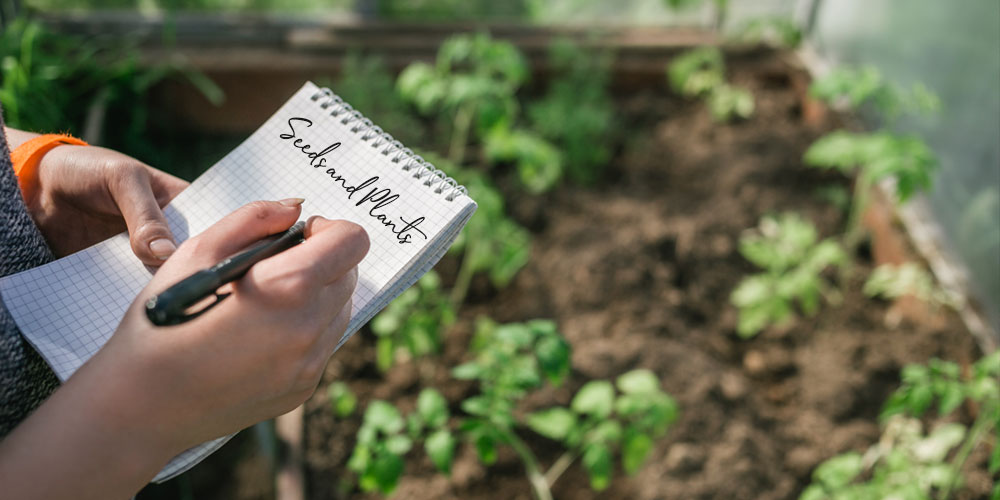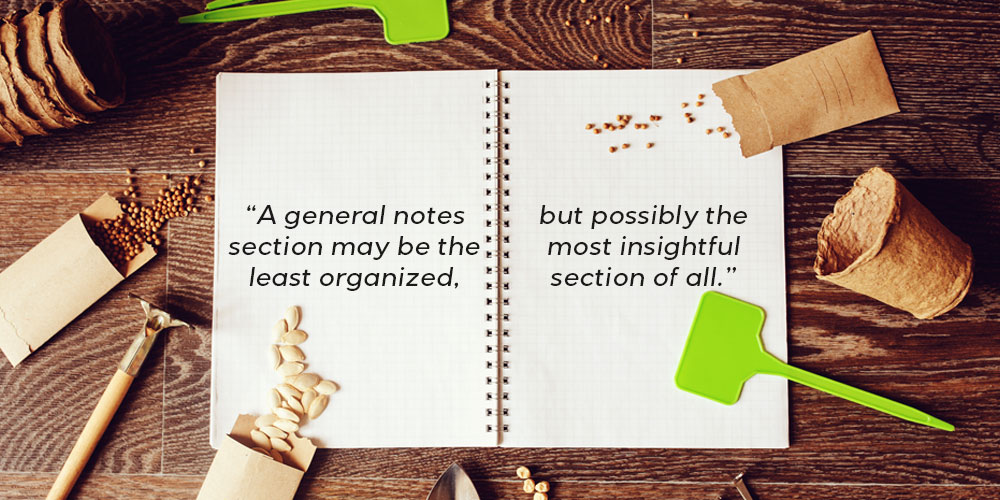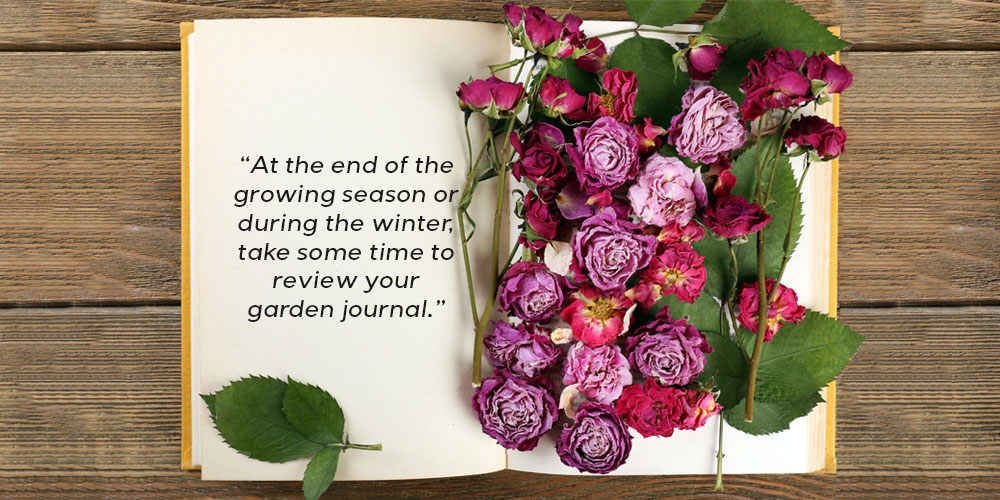How to Start a Garden Journal!
Starting a garden journal can be a really valuable process. Looking back on your garden journal and reviewing your successes and challenges can help you make better decisions about gardening in the future. It can also help you optimize your garden for the best results. Not to mention it’s a great way of tracking memories, so during the off-season, you can look back through it and remember the joy of being in the garden.
Creating your garden journal will be pretty simple, but there are a few key things you’ll want to make sure you include so you have specific references for next season. Knowing what to track in a garden journal can be tricky because, to some extent, your personal preferences will play a role. But there are a few things that most garden journals include that are helpful to have.

What to Use for a Garden Journal
You can use almost any notebook for a garden journal, or you can buy pre-designed garden journals. If you’re going to make your own from an empty notebook, it’s handy to have divider stickers you can use to split up pages for each section.
What to Track in a Garden Journal
It’s a good idea to list your plant hardiness zone and your contact information at the very front of your garden journal. This is also a great place to record the last frost date in the spring and the first frost in the fall. If you choose to use dividers, it might also be helpful to number the pages and include a table of contents that lists each section of your garden journal.
A Planting Sketch
Knowing where you planted which plant next year can be really helpful. Sketch the layout of your garden once it’s planted. It’s also handy to have sketches of perennial beds with approximate plant locations, so you know where to look for new spring growth. Your sketches don’t need to be to scale but should indicate where you planted certain items. This will help you take advantage of crop rotation benefits to help keep your soil healthy.

Seeds and Plants List
It’s handy to have a few lists of what seeds and plants you’ve used this year. This is basically a spreadsheet, so it can be as detailed or as simple as you want. Simply list the seed name and the date planted, or include the specific cultivar, where you bought it, when you planted it, and even when it bloomed, or when you harvested it if you love to nerd out on data.
If you buy quite a few plants as bedding plants, you could create separate lists for plants and seeds. Or, include them in the same list, but use some sort of differentiator, like S for seeds, and P for plants, so you know which was which when you look back.
You could also add empty seed packs to this section, either tape each one in or tape in a ziplock bag or envelope that you can put the seed envelopes in.
It’s also nice to keep a list of plants you discover in other gardens that you’d like to try next year, so you have an easy list to reference when you’re choosing seeds next year!
Expenses
If you’re curious about how much money you invest in your garden in a year, it might be handy to have an expenses section. You could include a list that details each item purchased, the date purchased, and the price, or you could just tape or glue an envelope in, put receipts in the envelope, and put the total of each receipt into your tracking list.
Either way, it’s not a bad idea to keep your receipts, especially if you’re purchasing trees or shrubs that may come with a warranty, which you usually need a receipt for.
Calendar
A calendar is handy to have so you can have an overall look at each month. You could note when you planted certain things, notable weather occurrences, or high and low temperatures on the calendar. It’s also a great place to track your fertilizer, pesticide, or beneficial insect applications, so it’s easy to check back and see when you should make the next application.

General Notes
A general notes section may be the least organized, but possibly the most insightful section of all. Here you can make quick notes about general gardening observations, weather notes, or anything else that seems interesting. Don’t forget to include the date, and then make notes of what you observed that day.
These things might seem pointless or inconsequential in the moment, but over time they’ll give you plenty of insight into weather and growth patterns in your Powell River garden.
Recording the wildlife you encounter in your garden, whether it is butterflies, birds, or bears, can also show you interesting patterns over time.
Joy & Gratitude
A garden journal is also a great place to record brief comments on what you enjoy in the garden or what you’re grateful for in the garden. A place to celebrate your gardening wins.
When you’re having a frustrating day, when it doesn’t stop raining for weeks on end, or a bear eats all the berries you were about to harvest, you’ll be able to go back and remind yourself that even when frustrating things happen, there are so many more moments of joy and happiness that your garden brings to you. Or when you’re feeling overwhelmed by the amount of weeding you have to do and wondering why you ever thought gardening was a good idea, go back and read about what you love about gardening.

Reviewing Your Garden Journal
At the end of the growing season or during the winter, take some time to review your garden journal.
If you find that you gave up on your gardening journal at some point, don’t beat yourself up. Gardening is a lot of work during the growing season, and writing down what happened can feel like a lot of extra work. As you review what you did write down, you’ll probably start to realize that there are excellent insights there. So next year, you can try again, and you’ll probably keep it up better.
Review the sections you didn’t use or the sections you wish you had used more, and plan next year’s journal with or without those sections. Make it your own, and discard what doesn’t matter to you, and add in what you wish you had more info about.
Once you have a season of garden journaling under your belt, make a habit of picking up last year’s journal once a week and reviewing what you worked on this time last year. It can be beneficial to know what was happening this time last year as you decide what to do this year.

